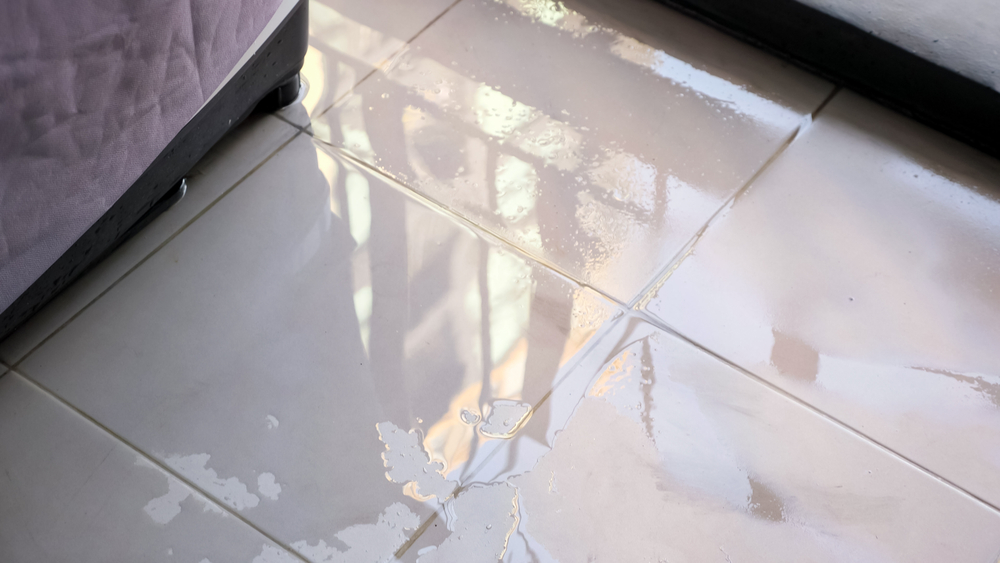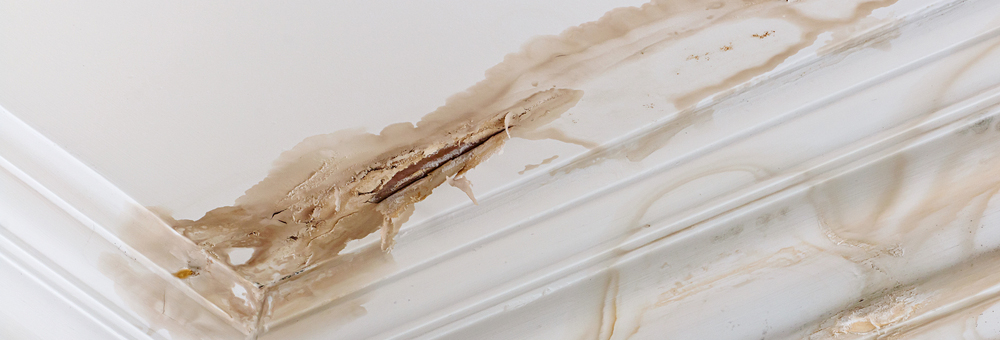How Water Damage Ruins Your Bathroom Floor
Apr 6, 2022

Your bathroom is home to a plethora of water sources: the shower, bathtub, toilet, and sink. With so many faucets, pipes, and drains, there are a lot of places from which water can leak. Any water leaking out into your bathroom can not only collect on top of the floor but can also find its way into your subfloor. If this happens, repairs can quickly become both expensive and time-consuming.
What damage can water cause in your bathroom, and how can you spot it?
What Damage Can Water Cause in a Bathroom?
Water can cause a lot of damage, often before you even realize that it’s happening. Water can ruin the wood subfloor which will compromise the integrity of the floor, cause mold to grow, and result in bad odors within the bathroom.
Subfloor Damage
When water damage occurs, it ruins more than just your finished bathroom floor. The finished surface is usually tile, laminate, or wood material. Underneath all of that material, holding your finished floor up is your subfloor. When wood material is subject to water damage it has to be cut out and replaced along with everything else. This is an especially costly repair.
Mold and Mildew
Your bathroom can be a moist place. Water vapor from a hot shower can condense, fogging up your mirror and leaving moisture behind on every other surface. If your bathroom isn’t properly ventilated, that moisture can collect on the walls and floor and seep through to the subfloor. Even though the volume of water may not be as much as in the case of a leak or flood, that moisture can still cause mold and mildew to grow. This can result in your floor feeling spongy to walk on. Even if you clean all of the mold that you can see, this may not be enough. Mold can grow under the floor and gradually eat away both the floor and the subfloor while also creating a musty smell in your bathroom. On top of that, mold and mildew can be a health hazard.
Cracks in the Floor
Over time, your floor’s sealant will become compromised, causing cracks and gaps. As water finds its way onto your floor, it will collect and drip through. All the wood that makes up your floor and subfloor absorbs the moisture causing it to expand. This warps the wood leaving the floor uneven, bumpy, and over time this becomes a bathroom hazard.
Hidden Water Leaks
Your bathroom has more water passing through its pipes than you may realize. In fact, the average person uses nearly 80 gallons of water per day in the bathroom. With that much water flowing every single day, imagine the kind of damage it can do to your floor if it starts leaking.
Plus, with all the piping behind walls and under floors, you may not be able to detect a leak. Depending on the severity of the leak, you may need to repair your subfloor along with your floor. It’s important to remember, even the smallest of drips, over a long period of time, become increasingly severe problems the longer they go unnoticed.
How Can You Spot Water Damage?
Water damage can be very costly. It’s therefore essential to spot the signs as quickly as possible to catch and repair the damage before it gets even worse. The more extensive and severe the damage becomes, the more costly and time-consuming it can be to repair it. But what are the signs that your bathroom has water damage?
Mold and Mildew

Not all mold and mildew will be in obvious places. However, if you do see mold and mildew in your bathroom, that’s a sign that there may be more hidden where you can’t see it. While it’s a good idea to clean up the mildew and mold that you can see, you should also have your bathroom checked for water damage.
Wet Floors
If the floor of your bathroom always feels wet, or if it feels spongy when you walk on it, it’s a sign that there’s a leak somewhere that is damaging your floors. Having a professional look for a leak as soon as you notice water on your floor can help you to avoid more damage.
Peeling Paint
If the paint or wallpaper on your bathroom walls is peeling, that’s a sign that there’s moisture behind the walls. That moisture could be the result of a leak or it could have built up over time from condensation.
Stained Ceilings

If the ceiling in the room below the bathroom is stained, then that’s a sign that there is water damage under the floor of your bathroom. A leak can cause water to get into the subfloor and from there onto the ceiling of the room below.
Contact the professionals at Flooring HQ to answer your questions about water leaks and any other flooring questions.Has Water Damage Ruined Your Bathroom Floor?
Contact us for a free estimate for new flooring.
CONTACT US
